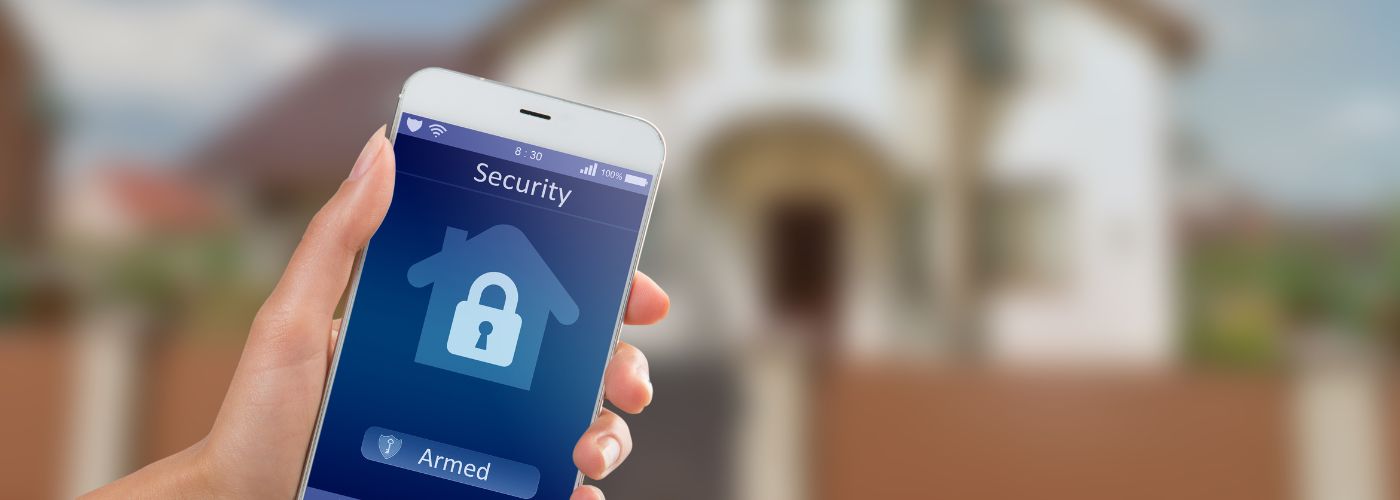In a world where our homes are becoming smarter by the day, the convenience of technology is often accompanied by hidden risks. In this article, we’ll explore practical ways on how to increase security for your smart home. Let’s dive into simple strategies that will help safeguard your digital haven and give you peace of mind in an increasingly connected world.
Ways To Increase Security For Your Smart Home
Enhancing the security of your smart home is as much about technology as it is about fostering awareness and establishing routines. Start by regularly updating the firmware on all connected devices, as manufacturers often release patches to fix vulnerabilities that could be exploited. Firmware allows devices to perform optimally and protect against emerging threats.
Also, remain vigilant about potential phishing attempts targeting smart home users specifically designed to gain unauthorized access or distribute malware via insecure channels like email or texts claiming system updates or maintenance requirements.
A phishing scam could lead to significant security breaches, allowing attackers to infiltrate your network and compromise connected devices. Always verify the authenticity of any communication before clicking on links or entering sensitive information.
Connect Your Smart Home To A Private WiFi Network
One of the most effective ways to increase security for your smart home is by connecting it to a private WiFi network rather than using a shared or public one. This approach not only enhances data privacy, but it also minimizes vulnerability to potential cyber threats.
A personal network allows you to implement strong encryption protocols and regularly change your passwords, making it significantly harder for intruders to gain access. Additionally, consider segregating your devices. Create a dedicated network for smart gadgets while keeping personal devices like laptops and phones on a separate connection.
Set up a private WiFi network by using a router that supports advanced security features. Start by accessing the router’s settings through its web interface, usually found at a specific IP address provided in the user manual.
From there, enable WPA3 encryption if your router and devices support it; this is currently one of the most secure wireless protocols. Next, create a unique SSID (network name) that does not disclose any personal information and is different from default names to prevent targeted attacks.
Use Two-Factor For Your Smart Home
One of the most effective ways to increase security for your smart home is by implementing Two-Factor Authentication (2FA). This adds an additional layer of protection by requiring not just a password but also a secondary verification method, such as a text message or authentication app.
By doing so, you significantly reduce the risk of unauthorized access. Hackers may guess or steal passwords, but adding this extra step makes it much more challenging for them to infiltrate your devices and systems.
It’s best to keep your passwords strong and unique for each device or account, utilizing a mix of uppercase and lowercase letters, numbers, and special characters. Additionally, consider using a password manager to help generate and store complex passwords securely.
Review Device Permissions and Access
To increase security for your smart home, regularly reviewing device permissions and access is essential. Many users overlook the fact that each connected device often comes with various settings that dictate what data can be shared and how other devices interact with it.
By taking the time to audit these permissions, you can identify unnecessary vulnerabilities or outdated connections that may expose your home to breaches. For instance, if you have a smart camera linked to an app necessary for monitoring but haven’t utilized its full capability in months, it might be wise to restrict access or even delete the app entirely.
Create A Family Emergency Plan with Smart Homes
To enhance security in your smart home, start by creating a comprehensive family emergency plan that integrates your connected devices. Consider designating an emergency contact who can be alerted through your smart systems if something goes awry.
This could include features like remote monitoring and notification settings on your security system cameras or door sensors. Additionally, ensure every family member knows how to interact with these devices during a crisis—whether it’s locking doors via an app or using voice commands to alert emergency services.
Another innovative strategy is to establish geofencing capabilities within your smart home ecosystem. By setting up virtual boundaries around your property, you can automate certain actions when you leave or approach home.
For example, as you drive away, lights can turn off, and locks can engage automatically. This helps to protect against burglars who might try to target your home.
Common Vulnerabilities in Smart Homes
One of the best ways to increase security for your smart home is to understand common vulnerabilities in smart homes. Think of this as knowing the smart home basics when purchasing your first smart home. One of the primary risks stems from inadequate password management. Using default usernames and passwords makes it easy for hackers to gain access.
Consider implementing two-factor authentication on all smart devices, as this adds an essential layer of protection beyond mere password strength. Regularly updating your firmware and software can also close critical security gaps that cybercriminals may exploit!


More to Read
Top Smart Locks For Homes
Are you still using a standard key to lock your door? It might be time
Jul
How To Keep Your Home Safe During Traveling
Have you ever returned from a dream vacation only to discover your home has been
Jun
Mistakes To Avoid With Smart Home Theater Installations
Have you ever felt overwhelmed by the options when creating your perfect home theater? You’re
May